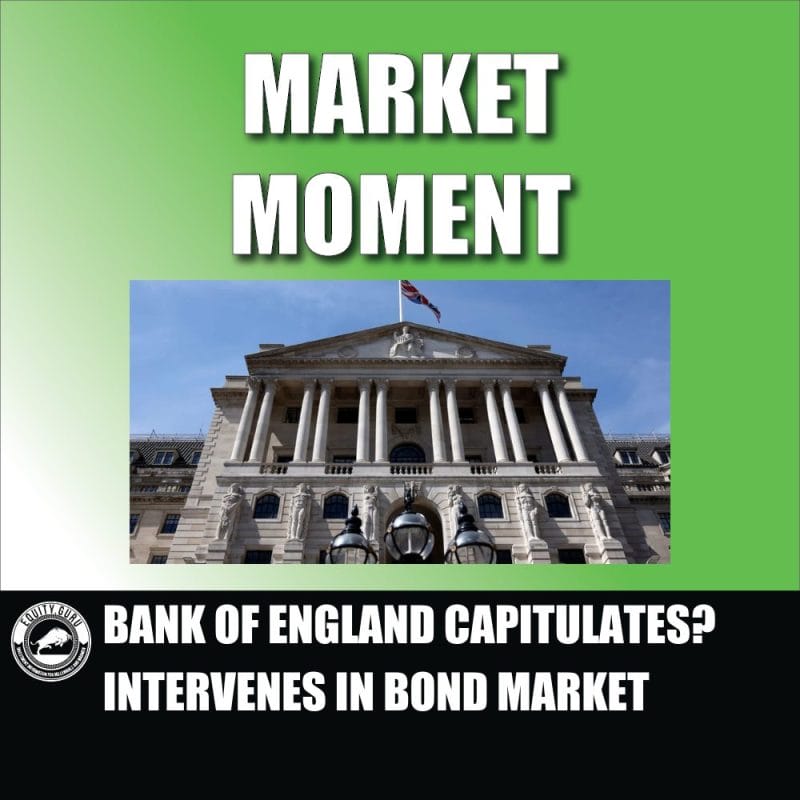If you are living in the UK, you can restart those ‘money printer goes brrrrr’ memes. The Bank of England is the first western central bank to capitulate since western central banks began raising interest rates and implementing quantitative tightening.
And I mean officially. Technically, the European Central Bank has introduced an easing-like policy but with an acronym that is not QE but is essentially QE, to deal with rising Italian yields. Something they may need to implement with more gusto sometime in the near future.
The Bank of England will be restarting quantitative easing (QE) due to ‘significant dysfunction’ in the bond market, and ‘material risk’ to financial stability.
In simple words, UK gilt yields were rising too fast. The Bank of England is now buying bonds in order to bring down rates.
Some contrarians are seeing this as the ‘breaking’ moment. Rates were rising too fast that they broke something in the system.
Now let’s be clear, this isn’t necessarily a full pivot. Apparently, the Bank of England will do some form of QE and raise interest rates at the same time.
The central bank will suspend the start of its gilt selling next week, and instead begin temporarily buying long-dated bonds to calm markets. UK markets have been volatile due to the government budget announcement which saw the British Pound crash to record lows, and saw UK gilt yields rise in their sharpest monthly rise since 1957.
The Bank of England said they will be monitoring the ‘significant repricing’ of UK and global assets in the recent days.
“Were dysfunction in this market to continue or worsen, there would be a material risk to UK financial stability. This would lead to an unwarranted tightening of financing conditions and a reduction of the flow of credit to the real economy,” the Bank of England said.
“In line with its financial stability objective, the Bank of England stands ready to restore market functioning and reduce any risks from contagion to credit conditions for UK households and businesses.”

The British Pound is showing signs of stabilizing against the US Dollar. My take on the Pound situation can be read here. Let’s watch how it reacts in the next few days. I would expect a bounce, but to call a hard reversal will take some time and require certain technical levels to be taken out. A bounce would still be a shorting opportunity.
What would get the British Pound bouncing would be a LARGE interest rate hike… which could be coming.

The chart that many of us are watching are those bond markets. I have notified readers and followers the importance of bond charts during this time period. Rising yields are hitting equity markets.
The UK 10 year gilt price has been falling hard. Remember, when the bond price falls, the yields or rates rise. This is why the Bank of England jumped in. To steady the UK bond markets and to ensure gilt yields don’t rise in an uncontrollable fashion.

In terms of UK stocks, the FTSE is right at support. It is amazing how all these major news and events occur when markets are near significant levels. Years of technical trading really enforce “show me the chart, and I will tell you the news”.
Strong buying as evident by the recent candle. This could be the early stages of a UK market reversal, but remember, even US markets are testing major support.
In summary, the Bank of England may have set a precedent for other central banks. Doing QE (easing) while raising interest rates is something unheard of, and just illustrates how much trouble and stress the financial system is in. Something was going to break in England (likely pensions), and the central bank had to interfere. Central banks are in a tough position where they know rising rates will kill the economy, but must continue to raise rates in order to prop up already weakened currencies and to combat inflation.

